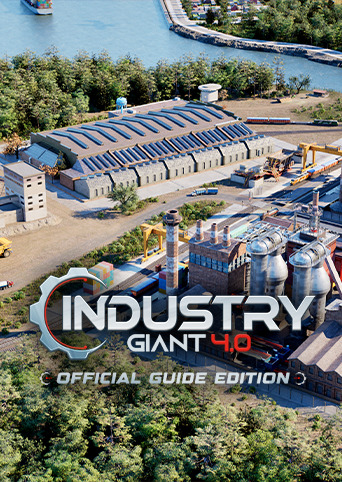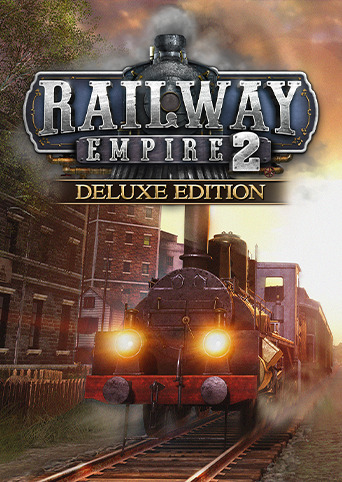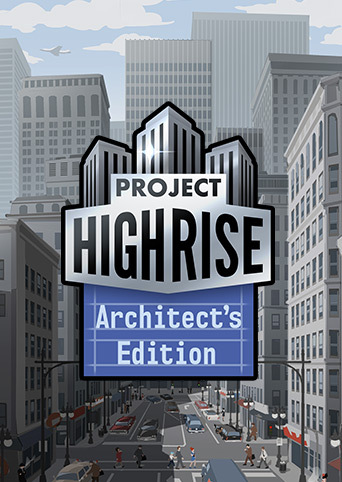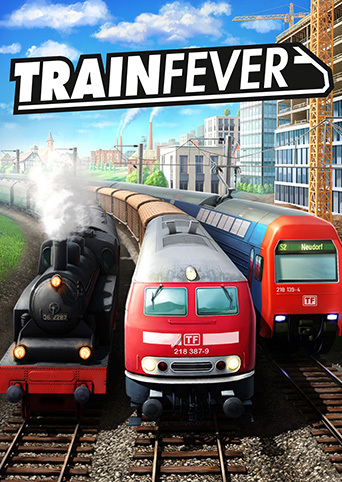
Cities: Skylines (2015)
Genres:Strategy, Simulator
Themes:Sandbox, Business
Game modes:Single player
Story:Cities: Skylines is a modern take on the classic city simulation genre. The game introduces new game play elements to realize the thrill and hardships of creating and maintaining a real city whilst expanding on some well-established tropes of the city building experience. From the makers of the Cities in Motion franchise, the game boasts a fully realized transport system. It also includes the ability to mod the game to suit your play style as a fine counter balance to the layered and challenging simulation. You're only limited by your imagination, so take control and reach for the sky!Show more
This game is a real gem, after SimCity there was never a really solid strict city builder, plenty of indie ones and more combat driven builders, but here we have the pure city building goodness! Would love to have it here in GOG, safe from the paradox/steam madhouse!
I bought this game during a Steam summer sale in 2018. The last city building game I had played was SimCity 3000 some 16 years prior. Cities: Skylines is what I thought SimCity 3000 was all those decades ago. It doesn't break the tried and true formula - in fact it lifts entire mechanics from that franchise - but adds new QoL mechanics (like a free-moving camera) to make the game feel fresh.
If a Paradox gem like Battletech can make it onto GoG then surely this can too!
For me, what makes Cities: Skylines so special is that it understands the two souls of a city-builder fan: the meticulous planner and the creative artist. It arrived in 2015 at a time when the genre felt lost, particularly after the disappointment of the SimCity reboot. We were all craving a true successor to SimCity 4, a game that gave us complexity, scale, and freedom. Cities: Skylines wasn't just a successor; it was a revelation.
My first city was a glorious, grid-locked disaster. I laid down roads with the confidence of someone who thought they knew best, only to watch in horror as my simple four-way intersections turned into a permanent red sea of tail lights. And that's when I had my first "aha!" moment: this wasn't just a game about zoning. It was a deep, intricate, and deeply satisfying puzzle about flow. Learning to master traffic—building roundabouts, creating efficient highway interchanges, and designing walkable neighborhoods with robust public transport—became the real game. Every traffic jam I solved felt like a genuine accomplishment.
I stopped building cities just to make money or hit population milestones. I started building cities with stories. I created a rust-belt city trying to revitalize its old industrial waterfront. I built a sprawling, sun-drenched metropolis with a focus on tourism. I spent hours, not on managing budgets, but on making a single neighborhood feel real.
That's the magic of Cities: Skylines. It’s a game where you can get lost for hours in the logistical challenge of providing power to a million people, and then spend the next several hours perfecting the look of a single residential street. It’s both a complex machine and a beautiful painting, and it lets you be the engineer and the artist at the same time. It’s not just a game; it's a creative outlet, and that's why it will always have a special place on my hard drive.

Black & WhitePlay the role of a deity in a land where the surroundings are yours to shape and its people are yours to lord over. Be an evil, malevolent god and the natives will worship you with fear in their eyes. Play as a kind, benevolent god and they will worship you with love in their hearts. Your actions decide whether you create a heaven or hell for your worshipers. Then select a creature from the land to act as your representative in the world. Raise it to gigantic proportions and teach it to do your bidding--whether the animal grows into an evil colossus of mass destruction or a kind and gentle giant is up to you. Progress through the game's rich storyline performing powerful miracles to battle other deities and become the world's supreme god.Top Trending Open world Sandbox

FreelancerEight hundred years prior to the start of our story, bitter conflict divided all of mankind. A handful of colonists struck out on their own to begin anew - far away from the Earth and its turmoil. Several ships were launched with enough equipment and supplies to give the hundreds onboard a fighting chance - but since the area around far-off Sirius had never been surveyed, no one really knew what to expect. What they found was a new frontier of free-flowing natural resources, unexplored territories, great wonders and lurking dangers. Each ship, representing the clusters of people and their earthly place of origin, settled into different parts of the galaxy pre-selected by their ship-board computer to give them the best chance of survival.
Life was hard in the beginning, but over the 800 years the different colonies prospered and expanded their territories, claiming more and more systems for their own. Survival and propagation eventually led to growth and profit as each of the colonies developed specialties and fostered commerce. As the colonies grew and time passed their connections with their roots on Earth dwindled and they lost their memories of the conflicts of the past. Soon their attention was dominated by new, more immediate conflicts. Feelings of lost ancestral connection spurred anachronism in the look of the great cities, and created a somewhat distorted image of each colony's cultural heritage. In the ever-expanding outer edge of the territories, frontier lawlessness prevailed.
The Houses: Each shipboard colony that left Earth carried some memory of its origins in its name. The Liberty carried Americans, The Bretonia flew from The United Kingdom and surrounding territory, The Kusari from Asia, and the Rheinland launched with Germanic cargo.
As each ship settled and colonies began to expand, they knew little about each other and their advancing development. Finally, little by little, the individual colonies found each other and began to set up trade routes to link their systems for commerce and solidarity.
Today, with each colony firmly rooted in its respective corner of the galaxy, the colonies rely heavily on each other for trade and industry but also compete for resources and new territories in the Border Worlds. The colonies mandate member governments in "The New Alliance" within the Sirius sector. To control conflicts, each colony has forged alliances and treaties with others as they have grown. Competition remains fierce, however. Struggles rage for supremacy in business, commerce, resources, power and control. There can be tenuous peace between colonies' political agendas, but the grabs for holdings constantly unsettle the volatile frontier.Our Pick Top Trending Science fiction Sandbox

Black & White 2In the game, the player takes the role of a god called from the void (nothingness) to help those who invoked them. However, the player is not an omnipotent style god, but rather a god who rises and falls with his believers and the player must help develop their nature according to their good or evil desires. The player also has a creature, their physical representation in the world, which takes the form of an anthropomorphic ape, lion, wolf, turtle, cow, or tiger. Its physical manifestation can grow to an immense size, and adopt a good or evil persona separate of the player's. They develop their character as the player rewards or punishes their actions. In addition to the god simulation and city-building elements introduced in the original Black & White, Black & White 2 also features elements of real-time strategy gameplay, with the addition of controllable warfare and fighting units.Top Trending Action Fantasy Comedy Sandbox

Digimon WorldDigimon world is a game that allows a player to raise their own Digimon and teach it to battle.Our Pick Top Fantasy Science fiction

Command & Conquer: The Ultimate CollectionAre you ready for the ultimate real-time strategy experience? Gather resources, build your base, and create the most powerful armies in the world before engaging the enemy in all-out war. Fight as the Global Defense Initiative or the Brotherhood of Nod as they clash over the rare mineral Tiberium in the classic original series. Challenge the red menace in an alternate universe in Red Alert, then step into the near future with Generals as China and the United States battle the Global Liberation Army, a terrorist organization hell-bent on bringing the world to its knees. However you play, you’ll enjoy limitless hours of RTS Command & Conquer gaming with 10 base games and 7 in-depth expansion packs.
Note: GameSpy ended all hosted game services in 2014, which affects the online multiplayer aspect of one or more games in the collection. Learn more about this in our FAQ.
Game Features:
Engage in intense, strategic battles. Make the most of every move as you order soldiers, vehicles, and aircraft across large maps filled with enemies, traps, and mission-critical resources. Move single troops, select small groups, or issue a unified attack order to all allies as you work to defeat the opponent.
Collect, create, conquer. Success in battle requires more than just a keen battle strategy. Fight for control as you struggle to collect the resources necessary to build new bases, troops, and weaponry, all while keeping the enemy at bay.
Command and Conquer everything. Explore the wide range of Command & Conquer games and fight every war from both sides! Rediscover the epic conflicts across two decades of gameplay. Take a first-person view of the C&C universe through Command & Conquer: Renegade – the series’ one and only first-person shooter – or start playing from the very beginning and enjoy the frenetic style of combat, immersive strategy and campy banter that launched a generation of strategy warfare games.Top Action Warfare Science fiction Sandbox

The Lord of the Rings: The Battle for Middle-earthThe players control the heroes or villians from the famous Lord of The Rings movies. With a hero characters similar to the Warcraft series you control both the armies and all the unique heroes. The game follows the movies very closely and even got scenes from the films appear in game. Not only does the game contain a giant campaign where you play through the journey of the ring as the good side, the game also features an evil campaign where as the players play as the evil forces of Middle Earth. With multiple diffrent races from all over Middle Earth, a giant spell tree to customize your game and a unique basebuilding layout the game was great for its time.Top Trending Fantasy Warfare

StarCraftStarCraft is a strategic game set in a Galaxy far away on multiple planets. Its style and balance between the three antagonistic species it features is unique and appealed to millions.Top Warfare Science fiction

Warcraft III: Reign of ChaosWarcraft 3: Reign of Chaos is an RTS made by Blizzard Entertainment. Take control of either the Humans, the Orcs, the Night Elves or the Undead, all with different unit types and heroes with unique abilities.Play the story driven single player campaign, go online to play default- or custom maps against people around the world or create your own maps with the map creation tool.Top Fantasy Warfare

Age of EmpiresAge of Empires (AoE) is a history-based real-time strategy video game developed by Ensemble Studios and published by Microsoft. The game uses the Genie, a 2D sprite-based game engine. The game allows the user to act as the leader of an ancient civilization by advancing it through four ages (the Stone, Tool, Bronze, and Iron Ages), gaining access to new and improved units with each advance.Top Historical Warfare

The Sims: Complete CollectionThe Sims is a life-building simulation with emphasis on intimate details of individual characters rather than expansion of an entire society or civilization. You are in control of nearly every aspect of the lives of the individuals who make up your chosen population in the neighborhood. Characters are developed from the ground up and you infuse and mold them with personalities, looks, desires, moods, urges, living arrangements, career and personal choices, life styles, and reactions. The Sims: Complete Collection includes a copy of The Sims and all seven of its expansion packs (Livin' Large, House Party, Hot Date, Vacation, Unleashed, Superstar, and Makin' Magic).Fantasy Comedy Sandbox Romance











